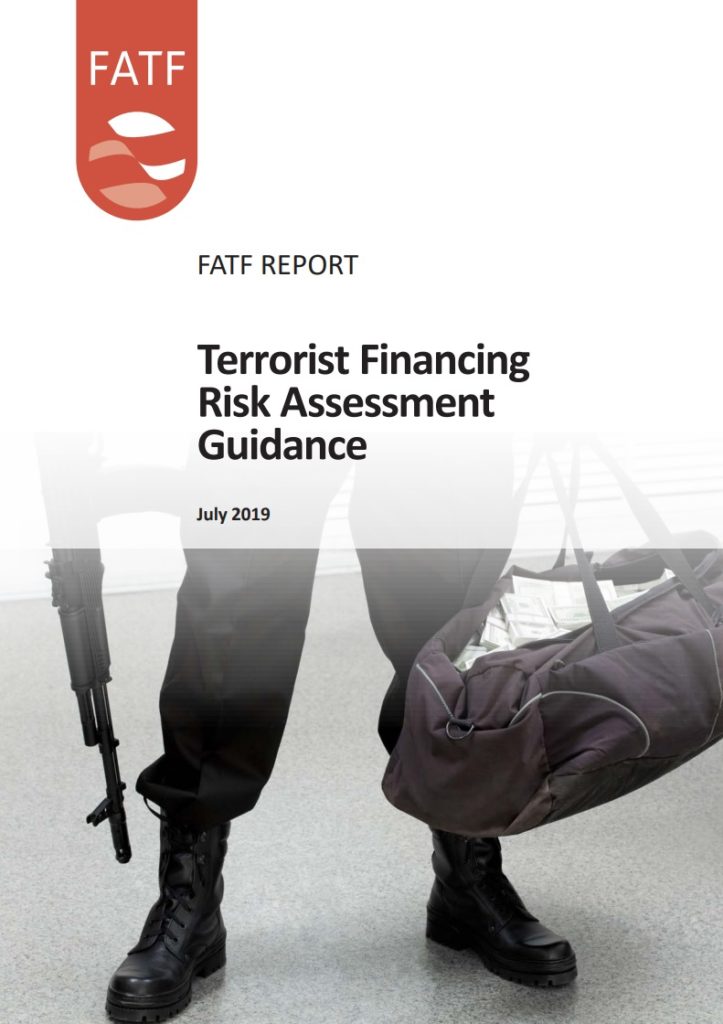Is the United States a jurisdiction with no or very few known (or suspected) terrorism or TF cases?
The Financial Action Task Force (FATF) released its Terrorist Financing Risk Assessment Guidance on July 5, 2019. It is available at FATF TF Guidance
As FATF notes in its introduction of the Report …
The FATF requires each country to identify, assess and understand the terrorist financing risks it faces in order to mitigate them and effectively dismantle and disrupt terrorist networks. Countries often face particular challenges in assessing terrorist financing risks due to the low value of funds or other assets used in many instances, and the wide variety of sectors misused for the purpose of financing terrorism.
This guidance aims to assist practitioners, and particularly those in lower capacity countries, in assessing terrorist financing risk at the jurisdiction level by providing good approaches, relevant information sources and practical examples based on country experience.
This report builds on the 2013 FATF guidance on national money laundering and terrorist financing risk assessments, and draws on inputs from over 35 jurisdictions from across the FATF Global Network on their extensive experience and lessons learnt in assessing terrorist financing risk. Recognising that there is no one-size-fits all approach when assessing terrorist financing risk, this guidance provides relevant information sources and considerations for different country contexts.
The report addresses:
-
- Key considerations when determining the relevant scope and governance of a terrorist financing risk assessment, and practical examples to overcome information sharing challenges related to terrorism and its financing.
- Examples of information sources when identifying terrorist financing threats and vulnerabilities, and considerations for specific country contexts (e.g. financial and trade centres, lower capacity jurisdictions, jurisdictions bordering a conflict zone etc.).
- Relevant information sources for practitioners when identifying cross-border terrorist financing risks but also terrorist financing risks within the banking and money or value transfer sectors, and facing those non-profit organisations that fall within the FATF definition.
- Good approaches for maintaining an up-to-date assessment of risk, and areas for further focus going forward.
The report includes an interesting discussion around “considerations for jurisdictions with no or very few known (or suspected) terrorism or TF cases”. It provides:
34. It is important that countries assess and continue to monitor their TF risks regardless of the absence of known threats. The absence of known or suspected terrorism and TF cases does not necessarily mean that a jurisdiction has a low TF risk. In particular, the absence of cases does not eliminate the potential for funds or other assets to be raised and used domestically (for a purpose other than terrorist attack) or to be transferred abroad. Jurisdictions without TF and terrorism cases will still need to consider the likelihood of terrorist funds being raised domestically (including through willing or defrauded donors), the likelihood of transfer of funds and other assets through, or out of, the country in support of terrorism, and the use of funds for reasons other than a domestic terrorist attack.”
The United States – What Does the SAR Data Show About Terrorist Financing Cases?
The FATF Report includes a list (in Annex A) of the fifty-six countries that have money laundering/terrorist financing, or stand-alone (in the case of nine of the fifty-six) terrorist financing risk assessments. The US is one of those nine, with a 2015 and 2018 national terrorist financing risk assessment. The 2018 assessment (available at US 2018 Terrorist Financing Risk Assessment) notes that depository institutions and money services businesses (MSBs) filed approximately 33% and 58%, respectively, of the 6,000 SARs filed for terrorist financing in 2015, 2016, and 2017 (see pages 16 and 18). The US report notes that these numbers come from the FinCEN SAR data, available at https://www.fincen.gov/reports/sar-stats. Looking at that data reveals the following:
6,131 – Total number of SARs filed with suspicious activity category of “Terrorist Financing” in filing years 2015 through 2017
2,188 – Depository Institutions
3,446 – Money Services Businesses (MSBs)
288 – Other
137 – Casinos
51 – Securities/Futures
21 – All Other Listed Filers (Insurance, Card Clubs, Loan/Finance Companies)
Using the FinCEN data, it appears that for the three year period indicated, depository institutions (approximately 11,000 banks and credit unions) filed 35.7% of the terrorist financing SARs, and MSBs filed 56.2% of the terrorist financing SARs. Looking at all (available) years’ filings – 2012 through Q1 2019 – depository institutions did, in fact, file 33% (33.4%) of the terrorist financing SARs and MSBs filed 58% (58.6%) of the terrorist financing SARs.
But the 6,131 terrorist financing SARs filed in 2015 through 2017 made up only 0.1% of the total number of SARs filed in that period – 5,822,709. Does this make the United States one of those “jurisdictions with no or very few known (or suspected) terrorism or TF cases”? Regardless, as the FATF notes, “the absence of known or suspected terrorism and TF cases does not necessarily mean that a jurisdiction has a low TF risk. In particular, the absence of cases not not eliminate the potential for funds or other assets to be raised and used domestically for a purpose other than a terrorist attack or to be transferred abroad.”

